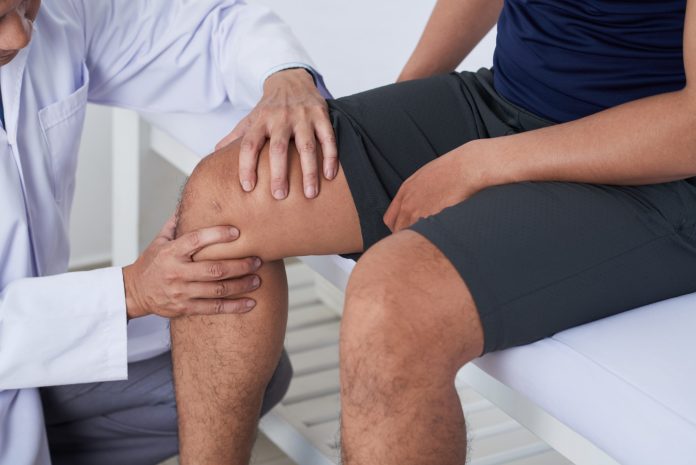Have you injured your knee, or are you worried about doing so?
Reducing your risk of injury is important. You need to know how to treat common knee injuries at home. You want to be better prepared to get the right treatment should they become serious.
Here, we’ll run through the most common knee injuries and how to treat them. That way, you know how to protect yourself and return to court in no time.
Keep reading to learn more!
Common Knee Injuries
Knee injuries are among the most common injuries, regardless of age or activity. These injuries can range from minor to severe, requiring varying degrees of treatment and recovery. See their differences below:
1. Fractures
These fractures usually occur as a result of a high-force trauma, such as a serious fall or car accident, or due to repetitive trauma, such as playing sports. Symptoms of knee fractures include severe knee pain, swelling, instability, bruising, and inability to put weight on the injured knee.
2. Dislocations
Common knee injuries resulting in dislocations are generally caused by physical trauma, such as motor vehicle accidents or sports-related injuries.
The most common type of knee dislocation is a “posterior dislocation,” which happens when the knee slides out of place backward. This increases the risk of damage to the lower leg bones, the ligaments, and the cartilage.
3. Tears
Tears are one of the most common knee injuries among athletes. Tears can range from minor to severe and can be caused by trauma or overuse. Tears usually occur in the ligaments, tendons, or meniscus of the knee.
Common ligament tears include anterior cruciate ligament (ACL) tears, medial collateral ligament tears (MCL), posterior cruciate ligament (PCL) tears, and lateral collateral ligament (LCL) tears.
4. Sprains
Sprains are one of the most common knee injuries and occur when the ligaments attached to the knee are torn. Knee sprains may be caused by a sudden jerk, twist, or impact to the knee, such as in sports activities, or a sudden fall or excessive force on the joints.
Signs and symptoms may include swelling, bruising, stiffness, and/or pain, which can be intense and localized or spread across the knee and up into the thigh.
How to Treat Knee Injuries at Home
Treating injury at home can often be the wisest decision. Coming up with a plan to address minor ailments or first-aid needs is an important step for any healthy individual. See how you can lessen the pain in the comfort of your home:
Try RICE for Strains and Sprains
Strains and sprains are two very common knee injuries, especially among athletes or those leading an active lifestyle. Fortunately, there is a simple and effective treatment – RICE (Rest, Ice, Compression, Elevation).
The process involves resting the affected area as much as possible so that it can heal; applying an ice pack, or a bag of frozen vegetables, to the affected area for 15-20 minutes at a time; wrapping the knee in a compression bandage or brace to reduce swelling and immobilize the joint; and elevating the leg above the heart to reduce swelling and discomfort.
Although for more severe injuries, it is suggested to see a healthcare professional, this method is known to help relieve some of the pain associated with knee injuries.
Physical Therapy Exercises
Physical therapy exercises for knee injury rehabilitation are an important part of the healing process for common knee injuries. The four most common knee injuries are anterior cruciate ligament (ACL) tears, meniscus tears, patellofemoral pain syndrome (PFPS), and tendonitis.
Meniscus tears require exercises to increase strength, range of motion, and stabilization. To address PFPS, exercises should target the strength and flexibility of the muscles around the knee, as well as improve posture and core stability.
Finally, tendinitis can be addressed with exercises meant to strengthen the muscles around the tendon, as well as a range of motion and stretching. By completing the appropriate physical therapy exercises, it is possible to recover from these common knee problems and progress toward healing.
Over-the-Counter Medications
Initially, over-the-counter medications such as ibuprofen, naproxen, and acetaminophen can be taken to reduce pain and inflammation. Baker’s cyst can be treated with ice packs and compression wraps, while patellar tendonitis can often be helped with stretching and strengthening exercises.
For meniscus tears, anti-inflammatory medications and ice packs can help to reduce swelling and pain. Knee bracing and physical therapy can also help to stabilize the joint. For ACL tears, an MRI and usually a surgical repair are necessary, though rest and physical therapy are still advised to help heal the other structures in the knee and to prevent further damage.
Use a Knee Wrap
When treating a knee injury at home, a knee wrap can be an effective tool to provide support while the injury begins to heal. Begin by wrapping the knee wrap around the injured area of the knee. Next, adjust the wrap, so it is snug but not too tight. This is to ensure you’re getting the right amount of compression.
Make sure the wrap is evenly distributed and comfortable to wear. Lastly, remove the wrap entirely after use. It’s important to note that this can only provide temporary relief. Severe knee injuries should be treated by a doctor. Knee wraps can be used to:
- increase the stability of knee joint
- reduce swelling
- support weak or injured ligaments
As with any injury, be sure to consult with a physician if you experience any pain, swelling, or stiffness in your injured knee. You can also get a high-quality knee wrap at https://bestofmanythings.com/best-knee-wrap-bakers-cyst/.
Stretches and Exercises
Knee injuries are common and can occur due to a variety of activities, such as running, jumping, and walking. Treatment at home can include rest, ice, compression, and elevation. Additionally, stretching and exercising the muscles and ligaments around the knee can help improve knee health over time.
For IT band syndrome, those same hip muscles and IT band should be stretched. And for meniscus tears, weight training exercises, such as squats, can help reduce pain and restore mobility. With continued care and a commitment to stretching and exercise, knee health can improve for those suffering from common knee injuries.
Aromatherapy Preparations
Injured ligaments can respond especially well to the anti-inflammatory properties of lavender essential oil, which can be applied through a compress of lukewarm water and a few drops of the oil. Healing from fractures, bone bruises, and arthritis can be fostered with comforting chamomile and ginger essential oils.
Applying a mixture of these soothing oils to the swollen area can help maximize healing in these cases. Additionally, adding complex blends of these essential oils in the form of balms to the knee area can aid in keeping inflammation away. Aromatherapy preparations can play an instrumental in easing both the physical and emotional pain that goes with these various knee injuries.
Heat and Cold Therapy
Cold therapy helps reduce inflammation and numbs the area to help reduce pain. Cold therapy should not be used for more than 15-20 minutes at a time and should never be used directly on the skin, as this can cause an ice burn. Heat therapy should be used for 20-30 minutes at a time.
Applying moist heat, such as a warm towel, helps to penetrate deeper and relieves pain more effectively than dry heat. Both heat and cold therapies can be used before, during, and after physical activity to help with pain relief. Additionally, over-the-counter pain medications and stretches can also help reduce pain and inflammation associated with knee injuries.
Stay at a Healthy Weight
Knee injuries are among the most common and debilitating injuries for people of all ages. Although most knee injuries should be treated with professional medical attention, there are some treatments that can be done at home to help ease pain and reduce the risk of further injury.
One of the best ways to prevent knee injuries is by maintaining a healthy weight. People who are overweight or obese are at greater risk of knee injuries due to increased pressure on the joints and ligaments, leading to inflammation and tears.
A healthy diet and regular exercise, such as walking, cycling, and swimming, can help reduce weight, improve joint health, and prevent knee injuries.
Learn How to Treat Knee Injuries at Home
Knee injuries can lead to debilitating pain and long-term health issues. Fortunately, there are treatments available to help ease the discomfort associated with four of the most common knee injuries, as well as improve knee act.
If you suspect you have suffered a knee injury, take steps to reduce pain and inflammation at home and make an appointment with an orthopedic specialist.
Did you find this article useful? Check out the rest of our blog for more!

